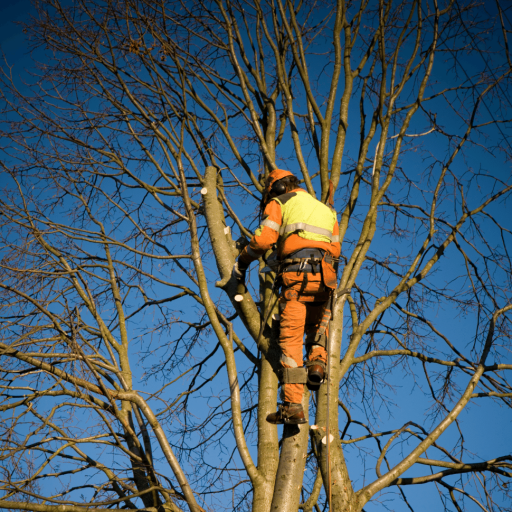Tree crown reduction is a specialist pruning technique that involves selectively reducing the size of a tree’s canopy while maintaining its overall structure, health, and aesthetic appeal. When done correctly, crown reduction is both an art and a science, ensuring that trees remain safe, healthy, and visually appealing without compromising their natural beauty. At Ashford Tree Care in Ashford, Kent, we understand the balance required to perform this delicate procedure, helping trees thrive in urban and rural environments alike.
What is Tree Crown Reduction?
Tree crown reduction involves carefully removing the outer branches of a tree’s canopy, reducing its height and spread while retaining its natural shape. Unlike topping, which can severely damage trees by indiscriminately cutting large branches, crown reduction is a precise and controlled process that preserves the tree’s integrity.
This technique is ideal for:
- Managing Overgrown Trees: Trees that have grown too large for their surroundings.
- Improving Safety: Reducing the risk of branches falling due to wind damage or structural weakness.
- Enhancing Tree Health: Removing dead, diseased, or crossing branches that hinder healthy growth.
The Benefits of Crown Reduction
1. Preserves Tree Health
Crown reduction removes branches that are weak, diseased, or damaged, allowing the tree to focus its energy on healthy regrowth. By maintaining the natural shape and structure, it avoids unnecessary stress and supports long-term vitality.
2. Increases Safety
Overgrown or unstable branches can pose a serious risk to property, pedestrians, and vehicles, particularly during storms or high winds. Crown reduction reduces the weight and height of the canopy, minimising the chance of branches breaking or falling.
3. Maintains Aesthetic Appeal
A well-pruned tree remains visually pleasing and proportionate to its surroundings. Crown reduction ensures the tree looks balanced and tidy without drastic changes to its natural silhouette.
4. Protects Property and Infrastructure
Large trees can interfere with nearby buildings, power lines, or pathways. Crown reduction helps manage the size of the canopy, preventing potential damage caused by overhanging branches.
5. Improves Light and Airflow
Excessively dense canopies can block sunlight and limit airflow to the ground below, affecting the health of other plants or lawns. By reducing the crown, more light and air penetrate through, benefitting the entire garden ecosystem.
When is Crown Reduction Necessary?
Crown reduction is often the preferred choice when:
- A tree has become too large for its location and needs to be managed without removal.
- Branches are encroaching on buildings, utilities, or public spaces.
- The tree shows signs of disease, decay, or structural instability.
- Light levels in a garden or home are being obstructed by an overly dense canopy.
It’s important to note that not all trees are suitable for crown reduction. Certain species, such as mature oaks, may not respond well to heavy pruning. Professional advice is essential to determine the most appropriate approach for your tree.
The Importance of Professional Crown Reduction
Tree crown reduction requires skill, knowledge, and precision to ensure the tree remains healthy and aesthetically balanced. Incorrect pruning can cause irreversible damage, leading to decay, poor regrowth, or even tree failure. At Ashford Tree Care, we:
- Assess Each Tree Individually: Understanding the species, age, and condition of the tree to determine the correct pruning method.
- Use Expert Techniques: Carefully remove branches to minimise stress and encourage healthy regrowth.
- Focus on Safety: Employ industry-approved practices and equipment to ensure the safety of your property and the surrounding area.
- Maintain the Natural Shape: Preserve the tree’s natural beauty while reducing its overall size.
Crown Reduction vs. Other Tree Pruning Methods
While crown reduction is ideal for reducing the size and spread of a canopy, it’s not the only pruning option.
- Crown Thinning: Focuses on removing select branches to reduce canopy density while maintaining its size and shape.
- Crown Lifting: Involves removing lower branches to raise the canopy, improving access or light.
- Pollarding: A more intensive pruning method often used for specific tree species to encourage dense, controlled growth.
Choosing the correct method depends on the tree’s condition, location, and purpose.
Conclusion
Crown reduction is a carefully executed process that allows trees to flourish while ensuring they remain safe, manageable, and beautiful. It offers numerous benefits, from improving tree health and safety to protecting nearby infrastructure and enhancing the overall appeal of your property.
For professional tree crown reduction services in Ashford, Kent, contact Ashford Tree Care. Our experienced team ensures your trees receive the expert care they deserve, balancing functionality with the natural beauty of your landscape.
Call us on: 01233 542 901
Click here to find out more about Ashford Tree Care
Click here to complete our contact form and see how we can help with your trees needs.
